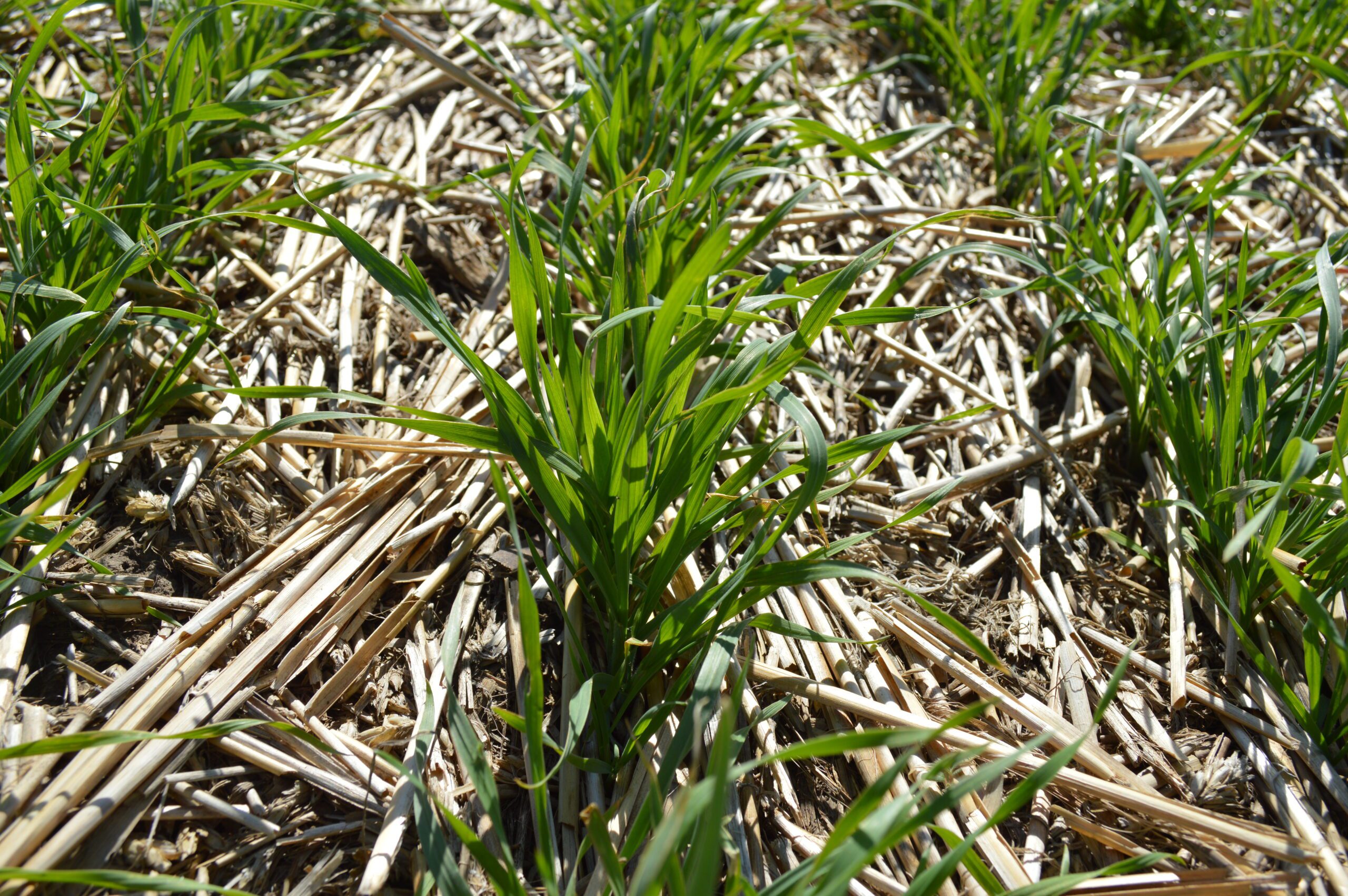
Cereal Rye – The King of Cover Crops
As farmers and ranchers alike navigate the world of regenerative agriculture and cover crops, the humble cereal rye plant (Secale cereale) has been making a name for itself as the undisputed King of Cover Crops! This title has been earned for multiple good reasons and we will highlight a few of them here.
A Cover Crop with a Work Ethic
Cereal rye is the workhorse of cover crops. It’s like that one friend who shows up early, stays late, and never asks for credit. When planted in the fall, rye gets right to work, germinating quickly in cool temperatures and establishing itself before winter sets in. Even planted later into the winter, cereal rye has the ability to germinate in soil temperature as low as 34 degrees – no other cover crop can do that! While other crops are either dead or dormant, rye is busy photosynthesizing in temperatures as low as 38 degrees, growing roots that reach deep into the soil, preventing erosion and improving soil structure. Think of it as nature’s very own construction crew, working tirelessly to keep your soil in tip-top shape.
Weed Control: Rye’s Secret Superpower
Cereal rye isn’t just good at protecting soil; it’s also a master at outsmarting weeds. You see, rye has a little trick up its sleeve called allelopathy—a fancy term for its ability to release biochemicals that suppress weed growth – especially small seeded weeds like marestail, pigweed and kochia. It’s like the bouncer at an exclusive club, keeping the riff-raff out so your cash crops can enjoy the spotlight. By planting cereal rye as a cover crop, you’re essentially laying down the law in your field, ensuring that weeds don’t stand a chance when the growing season rolls around.
The Fertility Relay
Now, you might be thinking, “But wait—doesn’t rye tie up nitrogen in the soil?” It’s true that cereal rye can temporarily lock up nitrogen as it grows, but when the residue breaks down, a nice mid to late season burst of extra nitrogen is just the thing that your soybeans ordered for maximum yield! When planting corn into a cereal rye cover crop, nitrogen management is critical and early season nitrogen will have to be provided to the corn crop, but the later season fertility bump from the decomposing rye will be appreciated! It’s a bit like a relay race, with rye handing off the nutrition baton to the next crop in line, ensuring that your soil is always in peak condition.
A Habitat for the Helpful
Cereal rye isn’t just a boon for your soil and crops; it’s also a friend to the critters that call your fields home. As it grows, rye provides a habitat for beneficial insects and wildlife, offering shelter and food when other plants have long since withered. By planting cereal rye, you’re creating a little oasis of biodiversity in your field—a place where nature’s helpers can thrive and keep pests in check. It’s like inviting the right guests to a party; the more beneficial insects you attract, the fewer pests you’ll have to deal with later on.
The Climate Resilience Partner
In an era where climate change is throwing more curveballs than ever, cereal rye offers a buffer against unpredictability. Its cold tolerance allows it to survive harsh winters, while its deep root system helps it weather drought conditions better than many other cover crops. In essence, cereal rye is the insurance policy your field needs—reliable, resilient, and always ready for whatever the year has in store.
Providing Forage Until The Cows Come Home
Because rye grows longer in the fall and faster in the spring than any of the other winter crops, it is the best winter and early spring forage you can grow! And because God created cows with legs, you can send them out to the field to do the work themselves by grazing rye based cover crop mixes throughout most of the winter and save money, time and wear and tear on equipment by feeding far less hay.
Conclusion: Start With Rye
So, why should you consider cereal rye as your main cover crop of choice? Because it’s the unsung hero that’s been quietly doing it all: improving soil structure, suppressing weeds, supporting beneficial insects, and offering resilience in the face of a changing climate. It’s time to give cereal rye the credit it deserves and let it take its rightful place in your crop rotation. After all, with all the benefits it brings to the table, the real question is: Rye not give it a try?
Want to talk with one of our expert sales representatives?
Fill out this form or give us a call today. 402-469-6784.